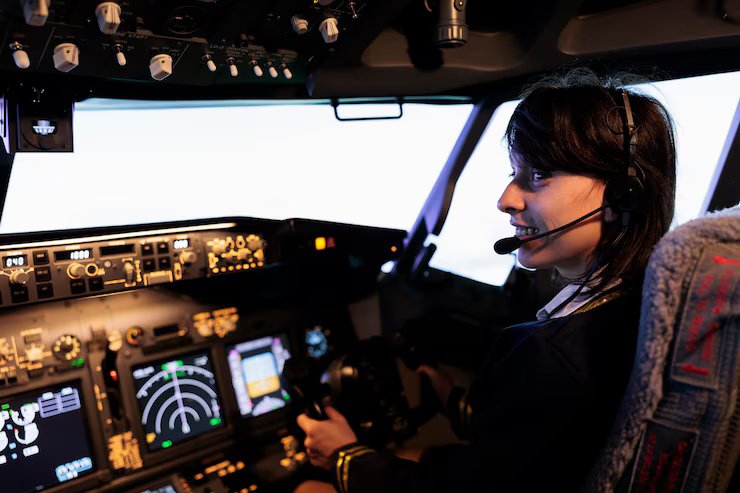In the evolving world of aviation, aspiring pilots today have more options than ever when it comes to pursuing their careers. One of the most significant developments in pilot training over the last two decades is the Multi Crew Pilot License (MPL) — a streamlined and airline-focused alternative to the traditional Commercial Pilot License (CPL). This article explores everything you need to know about the MPL license, including its training structure, eligibility, advantages, differences from CPL, and its relevance in India and globally.

What Is a Multi Crew Pilot License (MPL)?
The Multi Crew Pilot License (MPL) is a pilot certification introduced by the International Civil Aviation Organization (ICAO) that trains candidates to operate as co-pilots in a multi-crew airline environment right from the beginning. Unlike the Commercial Pilot License (CPL), which is more general and includes solo flying hours, MPL is structured specifically for airline operations.
The MPL license aims to provide airline pilot training that aligns closely with the actual job roles pilots will perform, using simulators, line-oriented flight training (LOFT), and multi-crew coordination (MCC) from the early stages of the course.
Key Features of MPL Training
- Simulator-Based Training: A significant portion of MPL training is conducted using advanced flight simulators.
- Airline-Specific Programs: Training is often conducted in partnership with specific airlines, which increases job placement opportunities.
- No Private Pilot License (PPL) Required: Unlike CPL programs, candidates do not need to obtain a PPL before starting MPL training.
- Focus on Multi-Crew Operation: Trainees learn to operate in a multi-crew environment from the beginning, enhancing coordination and communication skills.
MPL Training Structure
An MPL training program typically consists of four phases:
- Core Phase: Basic theoretical knowledge, including aviation regulations, meteorology, navigation, and human factors.
- Basic Phase: Basic flying skills using simulators and some real flight hours.
- Intermediate Phase: Enhanced simulator sessions focusing on abnormal and emergency situations.
- Advanced Phase: Airline-specific simulator training and Line-Oriented Flight Training (LOFT) with real airline procedures.
The multi crew pilot license duration and syllabus usually ranges between 18 to 24 months, depending on the training school and airline partnership.
MPL License Cost and Eligibility in 2025
The MPL license cost and eligibility in 2025 may vary depending on the training institution and the country. In India, the MPL program costs approximately ₹45–₹65 lakhs, which may include training, simulator hours, accommodation, and uniforms.
Eligibility Criteria:
- Age: Minimum 17–18 years
- Education: 10+2 with Physics and Mathematics
- Medical: Must hold a Class 1 DGCA medical certificate
- English Proficiency: As per ICAO standards
If you’re looking for how to get a Multi Crew Pilot License in India, ensure you select a DGCA-approved training academy and confirm if the course is airline-sponsored or self-funded.
MPL vs CPL: Which Is Better?
A common question among aspiring pilots is the difference between CPL and MPL pilot licenses and which path is better.
| Feature | MPL License | CPL License |
|---|---|---|
| Duration | 18–24 months | 18–24 months |
| Training Focus | Airline-specific, multi-crew | General aviation, solo flying |
| PPL Required | No | Yes |
| Job Readiness | Direct co-pilot readiness | May require additional airline training |
| Flexibility | Limited to partner airline | Greater flexibility in job options |
So, MPL vs CPL – which is better for airline jobs?
If your goal is to fly directly for a commercial airline and you’re confident about the airline partnership, MPL can fast-track your aviation career. However, CPL offers more flexibility, especially if you’re unsure about committing to one airline.
Multi Crew Pilot License in India: Current Scenario
The concept of Multi Crew Pilot License India is gaining popularity with aviation courses in India now offering MPL training in collaboration with airlines like IndiGo, SpiceJet, and Air India. Institutes such as:
- Indira Gandhi Institute of Aeronautics (IGIA)
- CAE Global Academy Gondia
- Indira Gandhi Institute of Aviation Technology (IGIAT)
offer MPL flight training in association with these airlines.
For official guidelines, aspirants can refer to the DGCA India MPL Requirements, which outline the training standards, eligibility, and certification norms.
Top Aviation Academies Offering MPL Courses
If you’re searching for the best flight schools for multi crew pilot license, here are a few notable academies both in India and abroad:
India:
- CAE Gondia (IndiGo Cadet Program)
- Capt Sahil Khurana Aviation Academy
- Indira Gandhi Institute of Aeronautics
International:
- L3Harris Airline Academy (UK, USA)
- OxfordSaudia Flight Academy
- Emirates Flight Training Academy (UAE)
Make sure your chosen academy is ICAO-compliant and has direct airline tie-ups for smoother job placement.
MPL License Acceptance Worldwide
One major question is, “Is Multi Crew Pilot License accepted worldwide?”
The answer: Partially, yes.
The MPL is recognized by ICAO, meaning countries under its jurisdiction can accept it. However, acceptance may vary based on local aviation authorities. For example:
- EASA (Europe): Accepts MPL under certain airline programs.
- FAA (USA): Does not currently recognize MPL; conversion is difficult.
- Australia & UAE: Generally accept ICAO-compliant MPL licenses.
Thus, while MPL is an excellent route for airline-specific careers, it’s not as globally flexible as the CPL.
MPL Salary and Career Opportunities in India
A common concern among students is the multi crew pilot license salary in India after placement. Here’s a rough breakdown:
- First Officer (Fresh Graduate): ₹1.5 to ₹2.2 Lakh per month
- Senior First Officer (3–5 years experience): ₹3 to ₹4.5 Lakh per month
- Captain (10+ years experience): ₹5 to ₹8 Lakh per month
MPL graduates are often absorbed directly into airlines they trained with, ensuring job security and structured career progression.
Commercial Pilot License vs MPL License: Final Verdict
When comparing commercial pilot license vs MPL, here’s a quick summary:
Choose MPL if:
- You have a guaranteed airline job offer or sponsorship
- You want to start working as a co-pilot ASAP
- You’re comfortable committing to one airline
Choose CPL if:
- You want job flexibility across different airlines or roles
- You aim to become an instructor or fly cargo/private jets
- You’re unsure which airline to work for
Pros and Cons of the Multi Crew Pilot License
Pros:
- Quicker transition to airline jobs
- Structured and modern training with real airline scenarios
- Lower total flying hours required
Cons:
- Less flexibility to switch airlines
- High cost, especially without airline sponsorship
- Limited global acceptance
FAQs About MPL License
1. Can I convert MPL to CPL?
Yes, but the process is complicated and may involve additional flying hours and exams.
2. Is MPL a good option in India?
Yes, especially with growing demand for airline pilots. Ensure the course is DGCA-approved and tied to a reputable airline.
3. Can I become a captain with MPL?
Absolutely. MPL holders can progress to captaincy after meeting experience and performance requirements.
Final Thoughts
The Multi Crew Pilot License is a revolutionary step in pilot training that bridges the gap between training and employment. With a focus on real-world airline operations, the MPL offers a compelling path for those aiming to fly commercial jets quickly and efficiently. However, it’s vital to evaluate your career goals, airline commitment, and budget before enrolling in an MPL training program.
If you’re interested in learning more about aviation career paths, pilot training, or the latest in the aviation industry, visit globally recognized platforms



